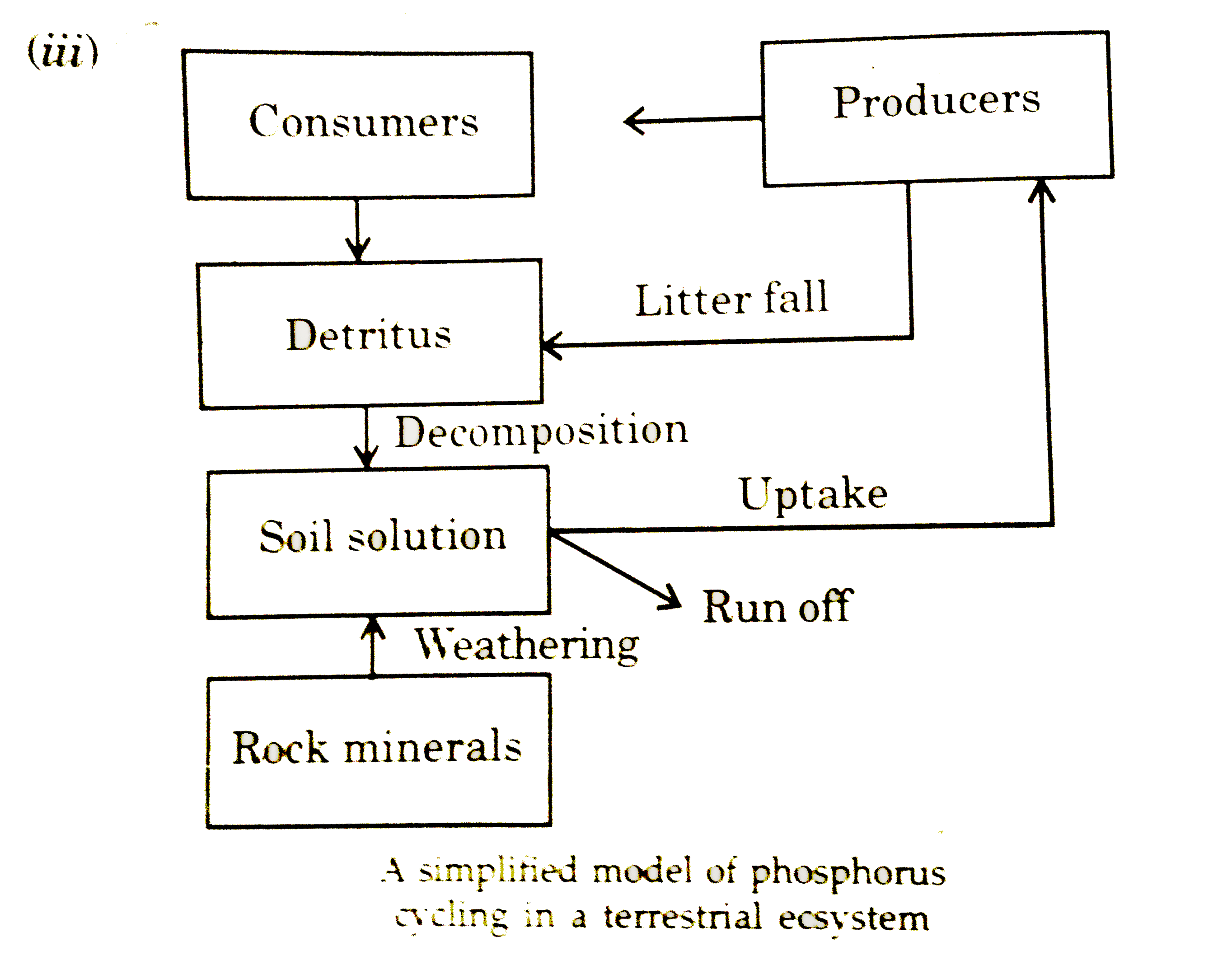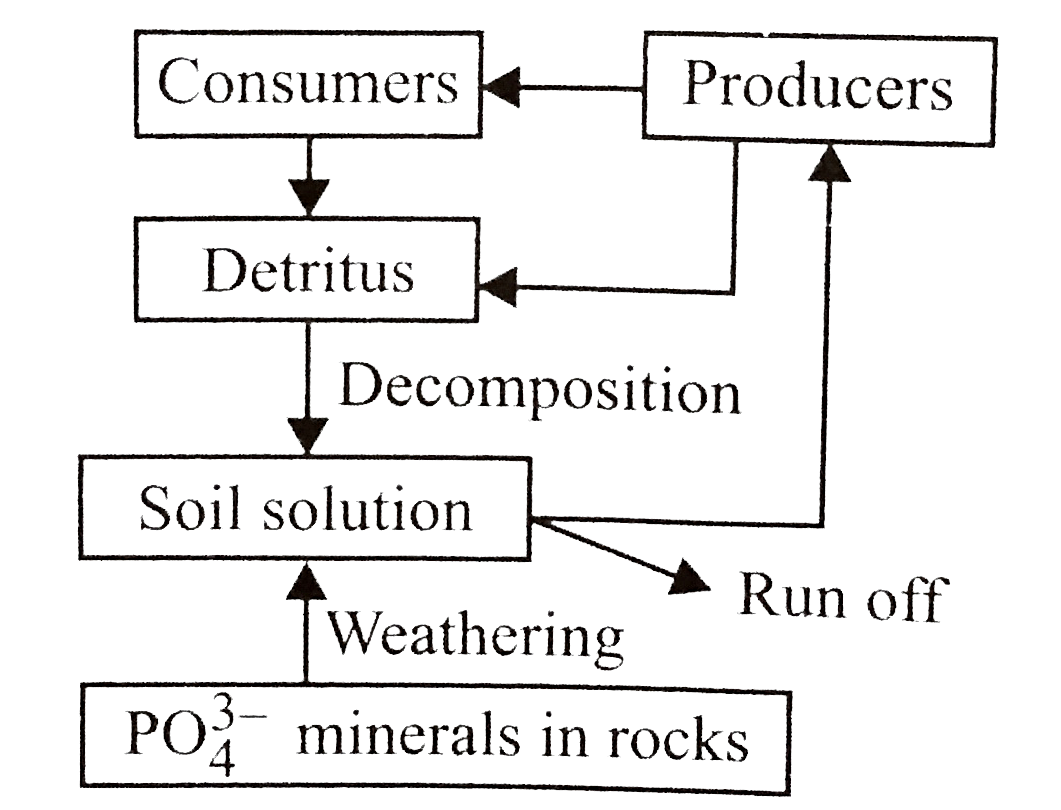(i) Name the specific cellular components where phosphorus is in abundance in living organisms.
(ii) Name the natural reservoir of phosphorus.
(iii) Explain the phosphorus cycle.
Video Solution
Text Solution
(i) Phosphorus is a major constituent of biologocal membranes, nucleic acids and cellular energy transfer systems.
(ii) 1. The Natural reservoir of phosphorus is rock, in the form of phosphates.
2. Minute quantities of phosphates get dissolved in the soil solution during weathering of rock.
3. Phosphates enter the plants through their roots into the food chain.
The Organic wastes and dead organisms are decomposed by phosphate-solubilising bacteria, which release phosphorus back.
5. The atmospheric input of phosphorus through rain fall, or gaseous exchange of phosphorus between organisms as an environment is negligible.
6.Re-cycling of nuctrients time and again.
This mining of phosphate and use of phosphate as fertilizer greatly accelerates the phosphorous cycle and may cause local overabundance of phosphorous, particularly in coastal regions, at the mouths of rivers, and anyplace where there is a lot of sewage released into the water.Local abundance of phosphate can cause overgrowth of algae in the water , the algae can use up all the oxygen in the water and kill other aquatic life. This is called eutrophication. The other animals that play a unique role in the phosphorous cycle are marine birds. These birds take phosphorous containing fish out of the ocean and return to land, where they defecate.
Their guano contains high levels of phosphorous and in this way marine birds return phosphoruous from the ocean to the land. The guano is often mined and may form the basis of the economy in some areas.
(iii) 
|
Topper's Solved these Questions
- XII BOARDSBOOK - XII BOARD PREVIOUS YEAR PAPER ENGLISHCHAPTER - XII BOARDSEXERCISE - OUTSIDE DELHI : SET-II (SECTION-A)
2 Videos
- XII BOARDSBOOK - XII BOARD PREVIOUS YEAR PAPER ENGLISHCHAPTER - XII BOARDSEXERCISE - OUTSIDE DELHI : SET-II (SECTION-B)
1 Videos
- XII BOARDSBOOK - XII BOARD PREVIOUS YEAR PAPER ENGLISHCHAPTER - XII BOARDSEXERCISE - BIOLOGY (Theory)[SET-I][Comptt.] Section -D
1 Videos
- SAMPLE PAPER 2019BOOK - XII BOARD PREVIOUS YEAR PAPER ENGLISHCHAPTER - SAMPLE PAPER 2019EXERCISE - Section E Part B
3 Videos
Similar Questions
Knowledge Check
Study the given flow chart and select the correct statement regarding this.

(i) It represents phosphorus cycling in a terrestrial ecosystem.
(ii) It represents phosphorus cycling in an aquatic ecosystem.
(iii) Natural resenvoir of phosphorus is phosphate rocks.
(iv) There is no repiratory release of phosphorus into atmosphere.
(v) Gaseous exchange of phosphorus between organisms and enviornment occurs to a considereable extent.AI,ii and vBI,iii and ivCii,iii and ivDI,iii,iv and v
Natural reservoir of phosphorus is
View SolutionWhich ones are reservoirs of Phosphorus and Nitrogen cycles respectively
View SolutionGive a graphic representation of phosphorus cycle in nature.
View SolutionName three allotropes of phosphorus. Which out of these is most reactive?
View SolutionName one place each in living organisms where the tissue is located :
Cartilage
View SolutionName one place each in living organisms where the tissue is located :
Ligament
View SolutionName one place each in living organisms where the tissue is located :
Squamous epithelium.
View Solution
